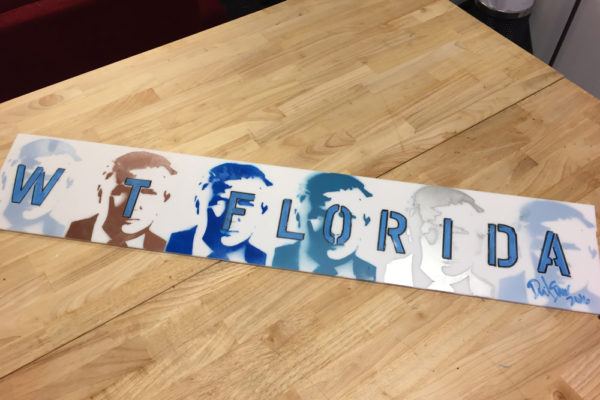Opinion Writing
The Washington Post op-ed process
So, after six drafts, five weeks of writing, rewriting, revising and redoing, my op-ed about the – now kiboshed – move of the Republican National Convention to Jacksonville has been published in the Washington Post. Whew!
This was my first go-around, so I have no idea if this level of intense, close editing – punctuated by days of radio silence – is normal. But it was a great, if stressful, experience, and I’m looking forward to doing it again.
First, a quick definition. An op-ed, which is short for “opposite the editorial,” are bylined, reported opinion pieces. Think sourced letters to the editor. (Editorials, which are the official position of the paper on a variety of subjects, are normally un-bylined.) They are similar in style and form to a newspaper’s regular columnists, but often written by freelancers, political leaders or celebrities.
There are a couple of things that I wanted to unpack while things are still, mostly, fresh.
The process
When you call and say you’re writing something for the Washington Post, people tend to sit up a bit straighter. I received quicker call backs and more detailed responses for this piece than I had when doing freelance work for other outlets. However, since this was my first piece, it will be interesting to see if that was a fluke, because of the nature of the piece (that is, people were just more interested in the topic) or truly because people hold the Post in high regard.
Even after all these years, I sometimes need to psych myself up to making the calls. Interestingly, once the person on the other end of the line picks up, that anxiety goes away. But a quick walk around the room, double checking my research and writing down some initial questions does wonders as well.
Doing reporting by phone, not email, is vital. Though the internet abounds with various lookups and research tools, often a paid service like WhitePages Premium is necessary to get to that holy grail of journalism sourcing: the cell phone. At this point, it seems so important that I’m thinking of requiring my students to sign up for a subscription as part of the class.
When I had to do a last-minute follow up to some of my sources, I figured it would be easier and faster to do it by email, as it would allow me to do continue my edits while I waited for their responses. I got essentially nothing. Instead, the only substantive content I got were from phone interviews.
When writing an op-ed, the sources are, as they normally would be, the main building blocks of the story, but in a different way than a reported article. Perhaps that sounds obvious, but since my background is mostly straight newswriting, the op-ed space feels very different. I interviewed seven people for this piece, reached out to at least that many more who did not respond (or I didn’t have the right number), but only one actually got in the final piece. Again, this feels unusual, but I’m not sure whether it is or not. At first, I felt a bit bad that I had wasted the time of the people who did not make the cut, but realize my conversation helped me sharpen and clarify my own position.
Also, there was the timing of the thing. I returned my fifth version of the piece literally moments before news broke that the GOP was cancelling the Jacksonville convention. The piece had to be complete recast, and many of the quotes and source in the penultimate version no longer made sense. Frankly, I’m grateful the piece was published at all.
Get updates about upcoming shows and published work
I won’t sell your info. That’s just rude.




